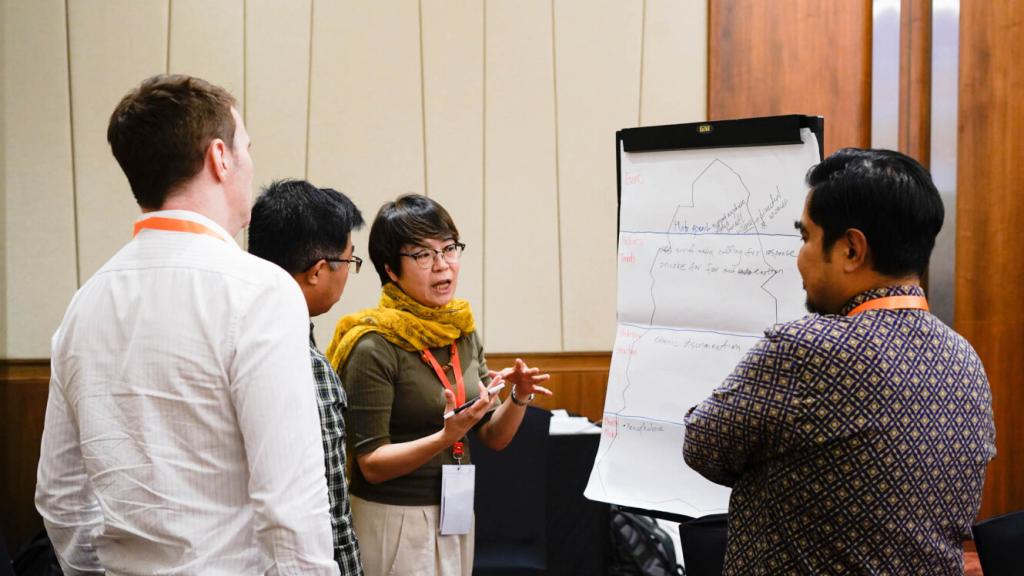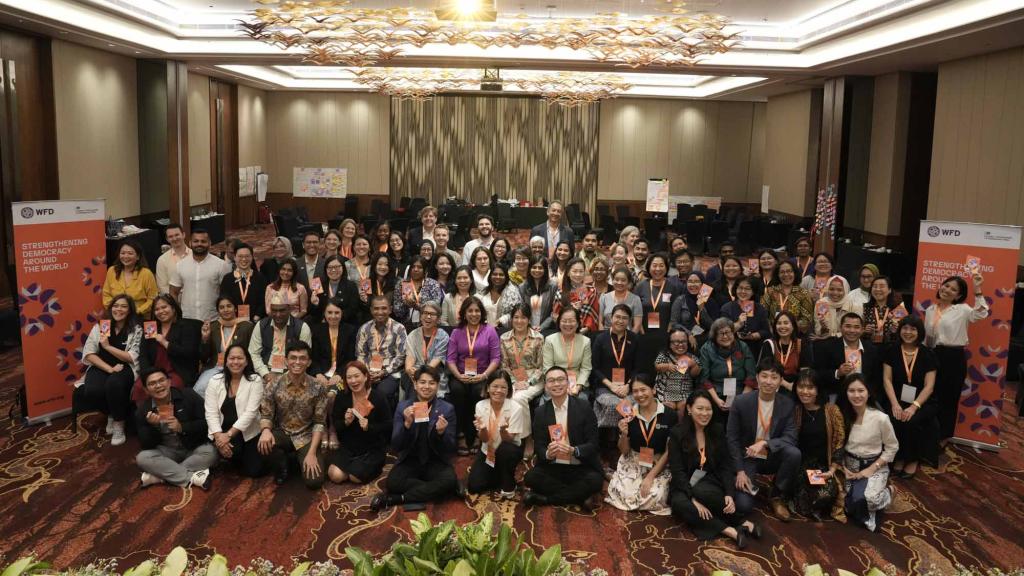This resource provides a comprehensive analysis on the unique challenges and opportunities faced by women candidates in legislative elections. Driven by empirical data of women’s representation in elections across different time periods and regimes, the module offers concrete insights for women candidates to navigate the complex political environment. Development of this module also benefitted from feedback gained through a series of trainings that engaged over 100 women legislative candidates running for parliamentary seats at subnational and national levels. The module is available in Indonesian and has been distributed to the 19 political parties competing in Indonesia’s 2024 election.
Background
Funded by Global Affairs Canada, WFD began implementing the ASEAN women’s political leadership programme in February 2022, aimed at creating an environment that better enables politically active women to participate and exercise leadership in politics across the ASEAN countries. In December 2022, WFD published a research report on the state of women’s political leadership in Indonesia, Malaysia, and Thailand. Tche report breaks down the structural, institutional, economic, and cultural factors that hinder or stop women from exercising full political participation, leadership, and governance.
Built on these findings, WFD collaborated with Cakra Wikara Indonesia (CWI) to develop a learning module that offers strategic guidelines for women legislative candidates competing in Indonesia’s 2024 election. Titled Empowered Women Leaders, Going Beyond the Numbers, the module was developed through a process of reflection and driven by empirical data. It offers an analysis on how women’s political leadership is influenced by a multitude of factors—from hierarchical structure within political parties, insufficient regulatory framework, lack of access to political financing, to socio-cultural challenges.
Overview of sections
Chapter 1: Meaningful women's participation and leadership
By looking at data of past election cycles, this chapter offers an analysis on meaningful women’s political participation and leadership. The authors argue that participation can transform into leadership and true representation when legislators (1) have power to influence policies and budget allocation; (2) understand the needs of their constituents, especially marginalised and vulnerable groups; and (3) take concrete actions to represent those actions.
Chapter 2: Factors affecting women's participation in elections
This chapter looks at how the open list proportional ballot, affirmative action, and parliamentary threshold regulations affect women’s political participation in elections. The authors examine the linkages between the increasing number of women legislative candidates in the last three elections (2009, 2014, and 2019) and stronger women’s positionality in political party structures. By looking at electoral districts where women won more than 30% of the seats available in the last election, the authors also introduce an analysis on “women-friendly” electoral districts. Additionally, this chapter provides an overview of how women legislative candidates have strategically championed women’s issues.
Chapter 3: Challenges faced by women in elections
This chapter maps the different challenges faced by women in elections. Systemic challenges include issues such as internal competition within political parties, lack of transparency in political party decision making process, and high parliamentary threshold. Socio-cultural challenges include issues such as traditional gender roles, stigma against politically active women, and violence against women in politics. The authors also dedicate a section in this chapter to unpack some common misconceptions about political financing and money politics.
Chapter 4: Developing a strong campaign team and strategy
This chapter offers recommendations for developing strong campaign team and strategy. The authors underline that every legislative candidate needs a reliable team to manage their campaign and that election is a negotiation process between candidates and voters. This chapter provides an example of how a legislative candidate can build strong campaign strategy by understanding the different target groups and priority thematic areas within their electoral districts.
Chapter 5: Campaign finance
This chapter addresses the issue of campaign finance by identifying the different regulatory frameworks that restrict the source and use as well as mechanisms to file report of those funds—which may also include resources received in the forms of goods and services. At the end of the chapter, the authors provide a simulation of how legislative candidates can develop a campaign budget and secure the funds by leveraging personal networks and relationships with community stakeholders.
Chapter 6: The Sainte Lague method
The electoral system in Indonesia is relatively complex with presidential and legislative elections taking place simultaneously. In this chapter, the authors explain the application of the Sainte Lague method in converting votes to legislative seats. Utilising data from the previous election, the authors provide a simulation of how legislative candidates can determine, for instance, the minimum number of votes required to win a seat in an electoral district.




